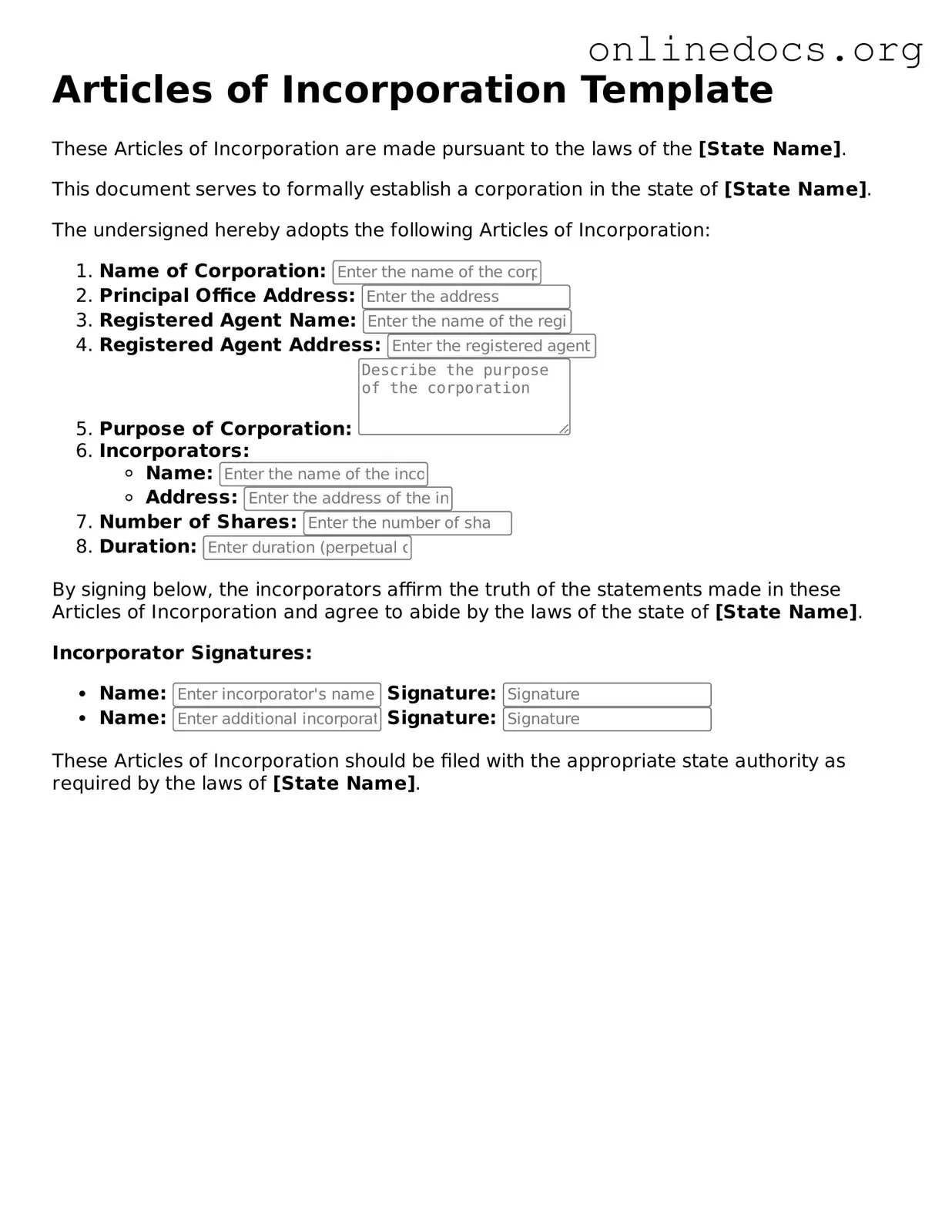The Articles of Incorporation share similarities with the Bylaws of a corporation. Bylaws serve as the internal rules governing the management and operations of a corporation. While the Articles of Incorporation establish the existence of the corporation and outline its basic structure, the Bylaws provide detailed procedures for decision-making, meetings, and roles of officers. Both documents are essential for the functioning of a corporation, but they serve different purposes. The Articles lay the groundwork, while the Bylaws fill in the operational details.
Another document akin to the Articles of Incorporation is the Certificate of Formation. This document is often used interchangeably with the Articles of Incorporation in certain jurisdictions. The Certificate of Formation also formally establishes a corporation and includes key information such as the corporation's name, address, and purpose. Like the Articles, it is filed with the state to create a legal entity. However, the specific requirements and terminology can vary by state, making it important to understand the local regulations.
The Operating Agreement is similar in purpose to the Articles of Incorporation, particularly for limited liability companies (LLCs). This document outlines the management structure, responsibilities, and financial arrangements among the members of the LLC. While the Articles of Incorporation focus on the corporation's formation and basic governance, the Operating Agreement provides a more detailed framework for how the LLC will operate on a day-to-day basis. Both documents are crucial for ensuring clarity and legal compliance.
Understanding the various documents associated with business formation is crucial for entrepreneurs, particularly when it comes to protecting sensitive information. One essential document is the Non-disclosure Agreement (NDA), which ensures that confidential details shared among parties remain secure. To learn more about this important form, you can visit https://californiapdfforms.com/non-disclosure-agreement-form/ for further information and resources.
Lastly, the Partnership Agreement bears resemblance to the Articles of Incorporation, especially in the context of partnerships. This document outlines the terms of the partnership, including each partner's contributions, responsibilities, and profit-sharing arrangements. While the Articles of Incorporation establish a corporation as a separate legal entity, the Partnership Agreement governs the relationships among partners in a business partnership. Both documents aim to clarify roles and responsibilities, but they apply to different types of business structures.
